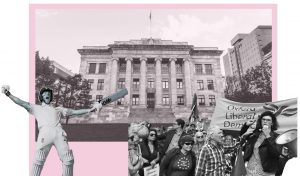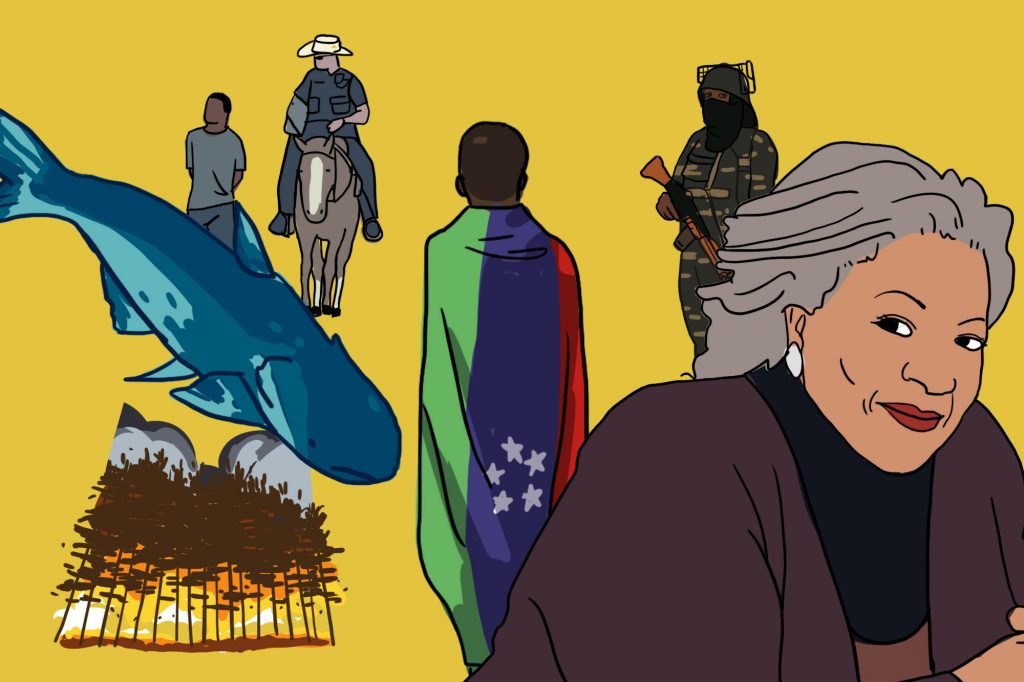
A Lesson in Simplification
by Hajar | September 21, 2019
As a regular Twitter user, my timeline is an erratic blend of breaking news and memes. For better or for worse, the intense flurry of tweets that accompanies any news updates has become one of my main sources of information. On 5 August, before news outlets had begun to report on the Kashmir lockdown, my timeline was already flooded with tweets about increased military presence in the area. A viral thread by Kashmiri poet Sanna Reya spoke of the rapid escalation of restrictions in the Indian-administered section of the region.
Once access to first-hand reports and articles increased, differing perspectives on the situation began cropping up. Initially, Twitter users were keen to emphasise Kashmir’s status as occupied land, but analysis quickly developed into one recurring comparison. As the hours passed, multiple threads appeared noting the similarities between Kashmir and Palestine. Soon after, people began to criticise these comparisons as desperate and clumsy attempts to raise awareness. These frustrations focused on the lazy simplification of the Kashmir conflict, an issue never far away in commentaries surrounding the ‘Muslim world’ as a whole.
To contextualise a little – the Himalayan state of Indian-administered Jammu and Kashmir is the most militarised zones in the world, with over 500,000 Indian soldiers operating in the region. Located between two nuclear-armed countries, India and Pakistan, ownership of the region has been deeply contested since the partition of British India in 1947. As a princely state, Jammu and Kashmir was permitted to choose between the two countries. The state was led by a Hindu prince Maharaja Hari Singh, whose natural alliance lay with India. Once this became obvious to the Muslim population, with the support of Pakistani militias, they began to riot. Singh turned to India for support, and under pressure from Mountbatten, the last viceroy of British India, Singh formally acceded to India. In retaliation, Pakistan invaded the region, triggering the first Indo-Pakistani war.
After this initial period of turmoil, the UN passed Resolution 47, pressuring both countries to reduce their military presence in the region and calling for a plebiscite for the Kashmiri people. Currently, Pakistan and India both control different parts of the territory. The plebiscite has still not happened.
On 5 August 2019, after increasing military presence in the region, the Indian government removed Kashmir’s special status as a semi-autonomous region. Through the revocation of two articles of the Indian Constitution (Article 370 which gives the region its special status and Article 35(a) which prevents non-residents from purchasing land in Kashmir), the Government has effectively absorbed the section of the region that it administers into India. For many, this marks the beginning of India’s pursuit of a settler-colonial project in the state of Kashmir. Prime Minister Narendra Modi’s constitutional reform is widely seen as an attempt to change the demographic of the Muslim-majority state through encouraging the settlement of Hindus and other minorities in the region. Although the separationist conflict has cost over 100,000 lives since 1989, it is still rare to hear any regular news updates on the issue.
Understanding why Kashmir has been largely neglected in the global political sphere is difficult. As the Kashmiri journalist Rouf Dar describes it, Kashmir is a territory founded “on the peripheries of the Muslim World”, a status which positions the region in a bleak vacuum of international invisibility. This lack of information surrounding Kashmir presents itself in the need for writers to contextualise the conflict’s history, and draw parallels to other global histories, in order to speak freely on the topic. In fact, at one point, it was easier for me to find articles framing the conflict through the Israel-Palestine conflict than it was to find articles by Kashmiri writers themselves.
In truth, comparing the two countries is a logical exercise. Both Palestine and Kashmir are Muslim-majority regions facing non-Muslim occupiers installed by British colonial decisions made in the twentieth century. Their occupiers use the same debilitating and humiliating tactics of checkpoints, regular army convoys and restriction of movement. The two regions even share the same resistance tactics, characterised by sporadic insurgent attacks and stone-throwing. This comparison extends to regime similarities between Israel and India; for critics, Modi’s Hindu-nationalist ideology is equivocal to the Zionist dogma championed by Benyamin Netanyahu, Prime Minister of Israel. It is easy to argue that India’s nullification of the constitutional articles and heavy militarisation of the region are tactics taken straight out of the Israeli playbook.
Though a compelling comparison, the international discussion of Kashmir’s struggle for self-determination through the lens of the hyper-visible Palestinian struggle has strong consequences for Kashmir. The recurrent portrayal of the region as a ‘South Asian West Bank’, as seen in the Washington Post, Bloomberg and The Independent, loses the nuance of the situation. In binding Palestine to Kashmir, Kashmir is unable to develop its own narrative. However similar the two are, they are not the same. Whilst Palestine is resisting only Israel, the Kashmiri region is witnessing the involvement of three world powers, India, Pakistan, and China. The continuous focus on these countries also means the Kashmiri population is reduced to collateral damage, rather than being acknowledged as active participants like Palestinians are. Moreover, perhaps the biggest difficulty is that the Kashmiri public has no unified desire to ally itself with either side. Although some are firmly advocating for their independence, there are others who see the Pakistani-side as already free.
However, this comparative approach is not just limited to Kashmir and Palestine. Rather, it exemplifies a greater issue in the general analysis of Muslim tragedies, a problem that regularly crops up in reports. From North Africa to South-East Asia, the Muslim experience is externally defined as one of war, persecution and turmoil. A history of invasions, rebellions and dictatorships does much to bolster this stereotype, but this does not excuse insufficient reporting. This approach generalises the experience of the Muslim world and denies these regions the complex and exhaustive coverage they deserve.
In the past year, both Algeria and Sudan have experienced political unrest due to civilian-led protests against leaders who had outstayed their welcome. Despite the time gap and historical differences, journalists jumped at the chance to draw comparisons between the Arab Spring and the protests in both countries. For The Financial Times, Andrew England wrote that central to the protests in Sudan, Algeria and the Arab Spring was political disenchantment and unemployment. In doing so, he overlooked the fact that these issues are common triggers for protests internationally, and are by no means exclusive to the Arab world. Similarly from Reuters, an article entitled “Arab Spring comes later in Sudan and Algeria” was released at the time of the protests, reducing the events in Sudan and Algeria to eight-year late extensions of the Spring.
Although comparisons are often essential for the comprehension of less well-reported issues, they seem to be unsparingly used in reports on the ‘Muslim world’. This simplification through comparison ultimately leads to the implication that these conflicts are inevitable. The public has become accustomed to hearing about issues similar to extensively covered events, resulting in no renewed concern and interest. In portraying all events as extensions of previous ones, the ‘Muslim world’ is denied support and informed awareness. This cycle of mistakes also perpetuates a characterisation of victimhood as central to the Muslim experience. Not only is this a lazy monolith to establish, but it also facilitates the erasure of the role of international powers both colonial and contemporary, evading demands for external accountability.
While it is beautiful to witness solidarity between two conflict-marred regions, it should not come at the expense of the complexity of their respective fights for independence. Kashmiris themselves identify heavily with the Palestinian cause, with pro-Palestine graffiti dotted around the streets of Kashmir. But as external observers, there is a responsibility to conceptualise the conflicts as separate events. The comparative angle often results in brash over-simplification, rather than genuine clarification. The crude lumping together of reports on Kashmir, Palestine and even Xinjiang into the digestible category of ‘Muslims being Occupied’ erases any trace of racial and historical nuance.
Ultimately, as victims of settler-colonial projects, Kashmir and Palestine are inextricably linked, but in making Kashmir a ‘Palestine 2.0’, the subtleties of the conflict are neglected. It is dangerous to solely reinforce the image of the Muslim world as caught in a cycle of repeating the same mistakes. Whilst other countries are permitted a layered representation of both external factors and internal triggers, there is a tendency to center Muslim victimhood and by extension, culpability, in reports on these regions. Through the exclusive focus on loss, a narrative begins to take shape which has no space for the accountability of other global actors.
In denying a population of almost two billion their complexity, and homogenising their experiences, the shades of identity and ideology that exist are dismissed. Defining Muslim identity through suffering and ill fortune is inaccurate and unhelpful. It is time for narratives to shift, both for Kashmir, and the rest of the Muslim world.
Words by Hajar. Image from wikicommons.




